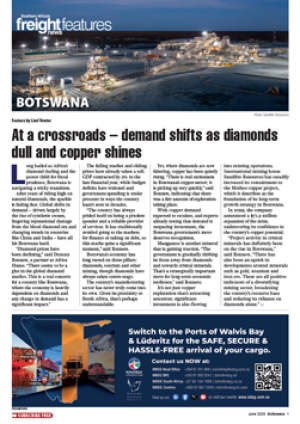Transnet stalls order for higher-stacking straddle carriers The terminal has to stack containers higher to make up for the shortage of ground space. Alan Peat THE UNDERLYING problem at the Port of Cape Town is not so much the handling equipment, but the space - or rather lack of it - according to information released to FTW by a member of Cape Town’s port liaison forum (PLF). The gantry cranes are not as much of a problem as the area on the quay to hold containers before and after discharge.” The problem, as he sees it, is that the terminal has to stack containers higher to make up for the shortage of ground space. But going higher needs the correct equipment. And this, according to the FTW source, is a problem that goes back to when it was built. “Landside gantries - which could stack 4-5 high - were favoured rather than a larger surface area,” he said. “But that was 1979 and we have moved on a bit since then in terms of volumes moving through the port.” The gantries are just too slow to work these volumes, he added, so the port has moved to straddle carriers. “But these only stack two high.” And, according to information from the PLF, the new straddle carriers - which can handle four high - have not been ordered as fast as they should have been, with a lead time of 12 months. The initial batch will only arrive by year-end. “The balance of 13 have not yet been ordered,” said the FTW contact, “thus - given that lead time - will only be here in August next year if ordered right now.” But, according to the source, SA Port Operations (Sapo) and Transnet have not placed the order. “Local Sapo management are in despair and asking for stakeholders to put pressure on Transnet to sign the orders so they will be here.” Also, he added, it is understood that “the powers that be” favour rubber wheeled mobile gantries. “And according to the ops people, these are not the answer.” The short-term plan to increase surface area, according to the forum, is two areas which are being hard surfaced - one next to the admin building and one by the rail head. But this in itself is a time-consuming project, FTW was told. “Also, the old Eskom power station site, which Portnet bought years ago, will only have its services up-and-running by end March next year. “Then it has to be hard-surfaced to hold containers.” But, said our source, the big problem is that it is not only too far from the terminal, but also separated by Marine Drive - the main artery from the West Coast. “The only way viable access could be secured, in my opinion, is to build an overhead bypass between site and terminal. “But the cost!” Another extension is a 300-metre area out towards Milnerton. But, according to the FTW source, if it starts now it will only be up-and-running by 2007. “And even then not complete in its entirety,” he said, “as the area will be reclaimed - but will then only be hard-surfaced 100-m at a time.” Another problem identified at the forum is the fact that vessels are getting bigger - and the draft limitations at the existing quay wall will become a problem. “Thus,” said our source, “the terminal has to be extended into the Ben Schoeman Basin. “This will have a two-fold benefit. It will allow for the quay wall to be strengthened to handle bigger, heavier gantries of 35-m base span, and also cater for the deeper draft vessels which will use the facility in the years to come.” But this, he added, leads to a Catch 22 situation. “We have a space problem,” said the source, “so reclaim more space. “But more space will draw bigger vessels with more capacity - and thus more space will soon be needed.”
